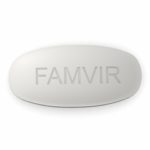Researchers have come up with a new type of treatment to keep genital herpes at bay- vaginal treatment. Laboratory mice have tested out tiny anti-herpes RNA particles in their vaginas which have proven to herpes simplex virus 2, or HSV 2, at bay for a week. The RNA, also called siRNA, are small bits of genetic molecules that can shut down specific genes. This was how the herpes infection could not surface on the area for a while.
HSV 2, also known as genital herpes, is a life-long infection that is spread through sexual transmission. Genital herpes has no absolute cure for it yet, hence the topical treatment test is an enormous step forward to finding a magic spell to cure it.
Herpes is a type of virus. Viruses spread in the body by first entering a host cell of the host body. Then the virus forces the cell to create copies of the virus itself, after which the viruses destroy the cell move onto the next ones.
The treatment used for the HSV 2 used two different types of siRNAs. One of the siRNAs made sure the vaginal cells were not able to create more viruses, while the other siRNA targeted the virus gene that controlled the reproduction.
Researchers declare that they are happy with how practical the treatment seems to be. The treatment allows the vaginal area to be free of infection for up to a week after application. This could be helpful as topical treatments are not often as affective as an entire week.
The treatment targets a gene called nectin-1, a gene which is present in the vagina of mice and people as well. This gene seems to be only used during the development stage of a person, so researchers are confident that it will not affect an adult in any manner. However, some argue that this gene came come to use during pregnancy. Even then, to find a long term anti-herpes treatment as this is a big step forward.



